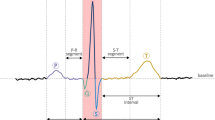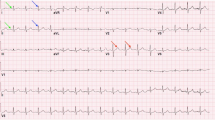Abstract
The use of electrocardiograms (ECGs) as a modality for biometric recognition has received increasing interest. Whereas ECGs are capable of providing a complete insight into the spatiotemporal nature of the cardiac electrical activity, the large volume of multi-lead recordings makes it challenging to elicit discriminant information therein. Typically, for biometric data to be of use in a recognition task, feature extraction must be performed to remove redundant information and noise from the data and enable the subsequent matching algorithms to work efficiently. In this paper, several feature extraction algorithms for ECG biometric recognition are proposed. Based on the idea of block projection, the proposed algorithms allow the temporal information used by existing single-lead-based techniques to be exploited while taking advantage of the structural information contained in multi-lead ECGs. Besides, these algorithms are applicable to ECGs regardless of their number of leads even to single-lead ones. Like most nonfiducial approaches, they require only one fiducial point (i.e., R peaks) to be determined. Detailed experiments with real data are presented to illustrate the performance of the proposed algorithms.








Similar content being viewed by others
References
Agrafioti, F., Rogers, E. S., & Hatzinakos, D. (2008). Fusion of ECG sources for human identification. In Proceedings of the international symposium on communications, control and signal processing (pp. 1542–1547).
Biel, L., Pettersson, O., Philipson, L., & Wide, P. (2001). ECG analysis: A new approach in human identification. IEEE Transactions on Instrumentation and Measurement, 50, 808–812.
Chan, A. D. C., Badre, M. M. H. A., & Badee, V. (2008). Wavelet distance measure for person identification using electrocardiograms. IEEE Transactions on Instrumentation and Measurement, 57, 248–253.
Chazal, P. D., Heneghan, C., Sheridan, E., Reilly, R., Nolan, P., & O’Malley, M. (2003). Automated processing of the single-lead electrocardiogram for the detection of obstructive sleep apnoea. IEEE Transactions on Biomedical Engineering, 50, 686–696.
Clifford, G. D., Azuaje, F., & McSharry, P. E. (2006). Advanced Methods and Tools for ECG Data Analysis. Norwood, MA: Artech House.
Coutinho, D. P., Fred, A. L. N., & Figueiredo, M. A. T. (2010). One-lead ECG-based personal identification using Ziv-Merhav cross parsing. In Proceedings of the international conference on pattern recognition (pp. 3858–3861).
Duda, R. O., Hart, P. E., & Stork, D. G. (2001). Pattern Classification (2nd ed.). New York, NY: Wiley.
Fang, S.-C., & Chan, H.-L. (2009). Human identification by quantifying similarity and dissimilarity in electrocardiogram phase space. Pattern Recognition, 42, 1824–1831.
Fatemian, S. Z., Edward, S., Rogers, S. R., & Hatzinakos, D. (2009). A new ECG feature extraction for biometric recognition. In Proceednigs of the international conference on digital signal processing (pp. 1–6).
Fayn, J., & Rubel, P. (2010). Toward a personal health society in cardiology. The IEEE Transactions on Information Technology in Biomedicine, 14, 401–409.
Goldberger, A. L., Amaral, L. A. N., Glass, L., Hausdorff, J. M., Ivanov, P. C. H., Mark, R. G., et al. (2000). Physiobank, physiotoolkit, and physionet: Components of a new research resource for complex physiologic signals. Circulation, 101, 215–220.
Gutta, S., & Cheng, Q. (2016). Joint feature extraction and classifier design for ECG-based biometric recognition. IEEE Journal of Biomedical and Health Informatics, 20, 460–468.
HealthWatch. The Master Caution. https://healthwatchtech.com/mastercaution/.
Hoekema, R., Uijen, G. J. H., & van Oosterom, A. (2001). Geometrical aspects of the interindividual variability of multilead ECG recordings. IEEE Transactions on Biomedical Engineering, 48, 551–559.
Irvine, J. M., Israel, S. A., Scruggs, W. T., & Worek, W. J. (2008). eigenPulse: Robust human identification from cardiovascular function. Pattern Recognition, 41, 3427–3435.
Israel, S. A., Irvine, J. M., Cheng, A., Wiederhold, M. D., & Wiederhold, B. K. (2005). ECG to identify individuals. Pattern Recognition, 41, 3427–3435.
Jain, A. K., Ross, A., & Prabhakar, S. (2004). An introduction to biometric recognition. IEEE Transactions on Circuits and Systems for Video Technology, 14, 4–20.
Levkov, C., Mihov, G., Ivanov, R., Daskalov, I., Christov, I., & Dotsinsky, I. (2005). Removal of power-line interference from the ECG: A review of the subtraction procedure. BioMedical Engineering Online, 4, 1–18.
Odinaka, I., Lai, P.-H., Kaplan, A. D., O’Sullivan, J. A., Sirevaag, E. J., & Sirevaag, J. W. (2012). ECG biometric recognition: A comparative analysis. The IEEE Transactions on Information Forensics and Security, 7, 1812–1824.
Pan, J., & Tompkins, W. (1985). A real-time QRS detection algorithm. IEEE Transactions on Biomedical Engineering, 32, 230–236.
Rezgui, D., & Lachiri, Z. (2016). ECG biometric recognition using SVM-based approach. IEEJ Transactions on Electrical and Electronic Engineering, 11, 94–100.
Rodgers, J. L., & Nicewander, W. A. (1988). Thirteen ways to look at the correlation coefficient. The American Statistician, 42, 59–66.
Shen, T. W., Tompkins, W. J., & Hu, Y. H. (2002). One-lead ECG for identity verification. In Proceedings of the second joint EMBS/BMES conference (pp. 62–63).
Singh, Y. N., & Singh, S. K. (2012). Evaluation of electrocardiogram for biometric authentication. Journal of Information Security and Applications, 3, 39–48.
Singh, Y. N., & Singh, S. K. (2013). Identifying individuals using eigenbeat features of electrocardiogram. Journal of Engineering, 2013, 8.
Sörnmo, L., & Laguna, P. (2006). Bioelectrical Signal Processing in Cardiac and Neurological Applications. London: Academic Press.
Surawicz, B., & Knilans, T. K. (2008). Chou’s Electrocardiography in Clinical Practice Adult and Pediatric (6th ed.). Philadelphia, PA: Saunders Elsevier.
Swets, D. L., & Weng, J. J. (1996). Using discriminant eigenfeatures for image retrieval. The IEEE Transactions on Pattern Analysis and Machine Intelligence, 18, 831–836.
Unar, J. A., Seng, W. C., & Abbasi, A. (2014). A review of biometric technology along with trends and prospects. Pattern Recognition, 47, 2673–2688.
van Oosterom, A. (1999). The use of the spatial covariance in computing pericardial potentials. IEEE Transactions on Biomedical Engineering, 46, 778–787.
Viskin, S. (2009). The QT interval: Too long, too short or just right. Heart Rhythm, 6, 711–715.
VitalSigns. The Handheld Single Lead ECG Device. http://www.vsigntek.com/review-of-several-portable-ecg-device/.
Wahabi, S., Pouryayevali, S., Hari, S., & Hatzinakos, D. (2014). On evaluating ECG biometric systems: Session-dependence and body posture. The IEEE Transactions on Information Forensics and Security, 9, 2002–2013.
Wang, Y., Agrafioti, F., Hatzinakos, D., & Plataniotis, K. N. (2008). Analysis of human electrocardiogram for biometric recognition. EURASIP Journal on Advances in Signal Processing, 2008, 11.
Wayman, J. L. (2001). Fundamentals of biometric authentication technologies. International Journal of Image and Graphics, 1, 93–113.
Widjaja, D., Varon, C., Dorado, A. C., Suykens, J. A. K., & Huffel, S. V. (2012). Application of kernel principal component analysis for single-leadecg-derived respiration. IEEE Transactions on Biomedical Engineering, 59, 1169–1176.
Wu, S. C., & Chen, P. T. (2015). Block projection based feature extraction for biometric recognition with multi-lead ECG. International Journal of Pharmacy and Biological Sciences, 4, 97–100.
Wübbeler, G., Stavridis, M., Bousseljot, D. K. R.-D., & Elster, C. (2007). Verification of humans using the electrocardiogram. Pattern Recognition, 28, 1172–1175.
Yang, J., Zhang, D., Frangi, A. F., & Yang, J.-Y. (2004). Two-dimensional PCA: A new approach to appearance-based face representation and recognition. IEEE Transactions on Pattern Analysis and Machine Intelligence, 26, 131–137.
Ye, C., Coimbra, M., & Kumar, B. (2010). Investigation of human identification using two-lead electrocardiogram ECG signals. In Proceedings of the IEEE international conference on biometrics: Theory applications and systems (pp. 1–8).
Acknowledgements
The authors would like to thank the financial support of the Ministry of Science and Technology of Taiwan, R.O.C. for the project under the Contract No. MOST 103-2218-E-007-013.
Author information
Authors and Affiliations
Corresponding author
Rights and permissions
About this article
Cite this article
Wu, SC., Chen, PT. & Hsieh, JH. Spatiotemporal features of electrocardiogram for biometric recognition. Multidim Syst Sign Process 30, 989–1007 (2019). https://doi.org/10.1007/s11045-018-0593-1
Received:
Revised:
Accepted:
Published:
Issue Date:
DOI: https://doi.org/10.1007/s11045-018-0593-1




